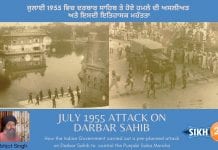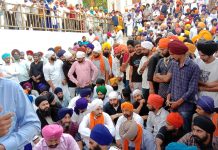http://www.youtube.com/watch?v=4VEK_IgWY_w
The Jallianwala Bagh massacre (also known as the Amritsar massacre), took place in the Jallianwala Bagh public garden in the northern Indian city of Amritsar Sahib on 13 April 1919. The shooting that took place was ordered by Brigadier-General Reginald E.H. Dyer.
On Sunday, 13 April 1919, Dyer was convinced of a major insurrection and thus he banned all meetings. On hearing that a meeting of 15,000 to 20,000 people including women, children and the elderly had assembled at Jallianwala Bagh, Dyer went with fifty riflemen to a raised bank and ordered them to shoot at the crowd. Dyer continued the firing for about ten minutes, till the ammunition supply was almost exhausted; Dyer stated that 1,650 rounds had been fired, a number which seems to have been derived by counting empty cartridge cases picked up by the troops.[1] Official British Indian sources gave a figure of 379 identified dead,[1] with approximately 1,100 wounded. The casualty number estimated by the Indian National Congress was more than 1,500, with approximately 1,000 dead.[2]
Dyer was removed from duty and forced to retire. He became a celebrated hero in Britain among people with connections to the British Raj.[3] The massacre caused a re-evaluation of the Army’s role, in which the new policy became “minimum force”, and the Army was retrained and developed suitable tactics for crowd control.[4] Some historians consider the episode as a decisive step towards the end of British rule in India,[5] although others believe that greater self-government was inevitable as a result of India’s involvement in World War I.




